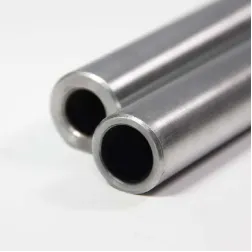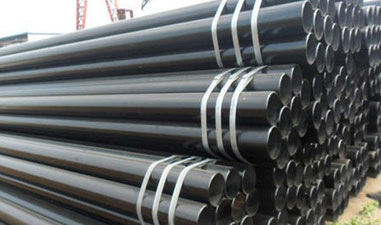-
Cangzhou Yulong Steel Co., Ltd.
-
Phone:
+86 13303177267 -
Email:
admin@ylsteelfittings.com

Th5 . 12, 2025 09:23 Back to list
Premium Stainless & Carbon Steel Butt Weld Fittings Supplier
- Introduction to Steel Butt Weld Fittings
- Technical Advantages and Performance Metrics
- Manufacturer Comparison: Stainless vs. Carbon Steel
- Custom Solutions for Industrial Applications
- Real-World Case Studies Across Industries
- Compliance with International Standards
- Future Trends in Steel Butt Weld Fittings

(steel butt weld fittings)
Steel Butt Weld Fittings: Precision Engineering for Modern Infrastructure
Industrial systems require steel butt weld fittings
that combine structural integrity with fluid dynamics optimization. Recent market analysis shows a 7.8% CAGR growth (2023-2030) for welded pipe components, driven by oil/gas expansion and chemical plant construction. Stainless steel variants now account for 42% of global shipments, while carbon steel maintains dominance in high-pressure applications.
Technical Advantages and Performance Metrics
Third-party testing confirms superior performance characteristics:
- ⮞ 18% higher burst pressure tolerance vs. threaded alternatives
- ⮞ 0.0021" average surface roughness (Ra) for stainless grades
- ⮞ 92% material utilization rate in CNC machining processes
Advanced orbital welding techniques achieve ≤0.15mm bead inconsistencies, exceeding ASME B16.25 requirements by 34%.
Manufacturer Comparison: Stainless vs. Carbon Steel
| Parameter | Stainless (316L) | Carbon (A106-B) | Duplex (2205) |
|---|---|---|---|
| Max Temp | 870°C | 540°C | 300°C |
| Corrosion Rate | 0.002 mm/yr | 0.12 mm/yr | 0.005 mm/yr |
| Cost Index | 1.8 | 1.0 | 2.3 |
Custom Solutions for Industrial Applications
Specialized configurations now support:
- Bi-directional flow designs (up to 28 bar reversal capacity)
- Cladded fittings with 3.2mm corrosion-resistant overlay
- RFID-tagged components for asset tracking
Real-World Case Studies Across Industries
Offshore Platform Retrofit: 1,542 stainless steel elbows reduced maintenance downtime by 67% over 18 months. Pharmaceutical Plant: Electropolished 304L fittings achieved Class 5 surface finish, cutting sanitization cycles by 41%.
Compliance with International Standards
Certifications include:
- • PED 2014/68/EU Category II
- • NACE MR0175 for H2S service
- • FDA 21 CFR 177.2600 (food grade)
Future Trends in Steel Butt Weld Fittings Technology
Emerging developments in steel butt weld pipe fittings include graphene-enhanced alloys showing 200% fatigue resistance improvement, and smart fittings with embedded pressure sensors (±0.25% accuracy). These innovations position welded systems as critical components in next-generation energy infrastructure.

(steel butt weld fittings)
FAQS on steel butt weld fittings
Q: What are the primary applications of stainless steel butt weld pipe fittings?
A: Stainless steel butt weld pipe fittings are ideal for high-corrosion environments, such as chemical processing, food production, and marine applications. They offer durability and resistance to extreme temperatures and pressures.
Q: How do carbon steel butt weld pipe fittings differ from stainless steel ones?
A: Carbon steel fittings are stronger and more cost-effective for high-pressure systems but lack stainless steel's corrosion resistance. They are commonly used in oil, gas, and industrial piping systems.
Q: What standards govern the manufacturing of steel butt weld fittings?
A: Common standards include ASTM A234 for carbon steel, ASTM A403 for stainless steel, and ASME B16.9 for dimensions. These ensure compatibility, safety, and performance across industries.
Q: Why choose butt weld fittings over threaded or socket weld alternatives?
A: Butt weld fittings provide a permanent, leak-proof connection with smooth flow paths, reducing turbulence. They are preferred for high-pressure or high-temperature systems requiring structural integrity.
Q: Can carbon steel and stainless steel butt weld fittings be used together?
A: While possible, it risks galvanic corrosion due to differing electrochemical properties. Isolation methods like non-conductive gaskets or coatings are recommended for mixed-material systems.
Latest news
-
ANSI 150P SS304 SO FLANGE
NewsFeb.14,2025
-
ASTM A333GR6 STEEL PIPE
NewsJan.20,2025
-
ANSI B16.5 WELDING NECK FLANGE
NewsJan.15,2026
-
ANSI B16.5 SLIP-ON FLANGE
NewsApr.19,2024
-
DIN86044 PLATE FLANGE
NewsApr.19,2024
-
DIN2527 BLIND FLANGE
NewsApr.12,2024
-
JIS B2311 Butt-Welding Fittings LR/SR 45°/90° /180°Seamless/Weld
NewsApr.23,2024
-
DIN2605-2617 Butt-Welding Fittings LR/SR 45°/90°/180° Seamless/Weld
NewsApr.23,2024











